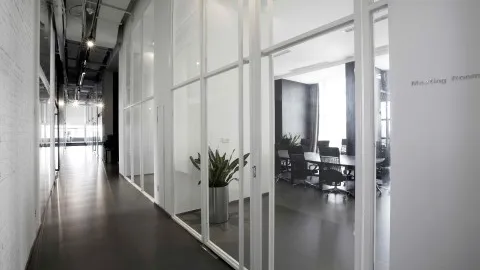
How companies can successfully transition to hybrid work in just 2 steps
A Cisco official said a good hybrid workplace is where employees get to work the way they want.
There are several suggestions on the internet on how organisations can transition to a hybrid work setup. Some say it takes a seven-step plan, whilst others say there are about 10 ways to ensure that the shift runs smoothly; but according to an expert at tech company Cisco, companies only need to focus on two things to achieve the new work model.
In an interview with Hong Kong Business, Wilson Ching, general manager of Hong Kong and Macau at Cisco, said adoption of a hybrid work model begins with a culture change.
According to Ching, the culture of "seeing is believing" is still prevalent amongst organisations, and is also amongst the reasons why some are sceptical to adopt hybrid models despite demand from employees.
In Hong Kong, Cisco said 71.3% of employees prefer working in a hybrid arrangement. Another survey by PwC, however, suggests that only less than half of employees in the city are being offered the option of flexible work.
"It has to start from the top, at the executive level. The leaders have to believe in hybrid work," Ching said.
Once leaders start to believe that employees can be productive despite not reporting physically to work, culture within the company will change, which could mean changing the way they are funding a certain investment, agenda, or plan – like the transition to hybrid work.
Data from Cisco showed that in Hong Kong, 49% of employers claimed to be more productive in hybrid work.
Step two
Once enough funding or attention is put toward the shift, the next step is to identify which technology should be adopted to make the setup work.
For small and medium enterprises, Ching said it's better to find a third-party which can help in implementing technologies they will need for a hybrid transition.
Ching said the technology's job is to ensure that workers feel included and safe at work, wherever they may be doing their tasks.
“When people are working from home, they should not feel like they will be left out in discussions, they should feel like they are in the same room and have an equal voice with their teammates, colleagues who are working in the office,” he said, adding that virtual meeting tools are a need for organisations.
“Companies have to start looking for technologies that create this kind of platform, a platform where they can stay engaged no matter where they choose to work,” he added.
According to Ching, these platforms must deliver access to everything including business-critical cloud applications, with the same speed and ease employees would have onsite.
“Get their devices onboarded quickly. Do away with cumbersome VPNs. Make sure the network is highly available. Provide a seamless meeting experience for all employees – no matter where they’re joining from,” he said.
Safety online and offline
On the aspect of safety, Ching said organisations must focus on cybersecurity for its online setup, and redesigning the workplace for those on-site.
For the online setup, Ching said organisations can implement a “zero-trust approach to identity and security,” adding that it will allow for better protection of employees, data, and infrastructure in a hybrid environment.
Data from Cisco showed that the shift to work from home brought a 600% spike in cyberattacks.
Using technology, Ching said companies can provide data to their employees to help them decide whether to report to work physically, like how many are expected to work onsite on a particular day.
These pieces of information can likewise be used by organisations to better plan how the workplace will be used, said Ching.
“Monitoring the movement of people and things through the physical offices is now an important factor in reducing health risks. By using wireless infrastructure, companies can leverage their network as a sensor, creating a building-wide monitor that determines the virtual heartbeat of the workforce,” he said.
“With cloud-based location services platforms, organisations can transform their physical workspaces using location analytics, gaining network insights that inform smarter and safer business outcomes,” he added.
Making the hybrid model work
Gathering feedback from employees will also be key for organisations to evolve their hybrid model moving forward, said Ching.
After all, Ching said a true hybrid setup is where employees get to work the way they want, and in the way they feel comfortable and safe.
“Instead of designing work solely around locations, organisations must design the work experience for and around the worker, a user-centric design – wherever they are,” Ching said.
Ching said that once the needed technologies are in place and the culture has been rebuilt starting from the top, then organisations can live in the hybrid model.
“In order to thrive, employees need a consistent, high-quality experience no matter where they’re working, and deploying the right network solutions plays a significant role in delivering that,” he added.
To summarise, Ching said a good hybrid setup is one that is “inclusive, flexible, supportive, secure, and easy to manage.”



















 Advertise
Advertise






